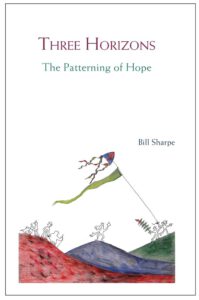I have set myself the task to touch on every part of the Doughnut Model in my first three posts: the ecological ceiling, the safe haven and the social foundation. This is the last one in that series – the social foundation.
The social foundation touches on many concepts that are in general covered in economics courses, like social security, the labour market and income distribution. However, discussing these concepts does not make the social foundation an integral part of the study of economics.
It is not only the question what students need to know about the social foundation. More importantly is the question how we are going to present social foundation concepts.
When I go over the elements of the social foundation I notice three overarching concepts: (no) poverty, equality, and self-dependence.
No poverty is about being able to meet one’s needs. I would like to make the distinction between absolute and relative poverty. The amount referred to in the UN’s Sustainable Development Goal (SDG) 1 target is the threshold for extreme poverty. It is the amount a person needs to meet their basic needs. Below this threshold poverty is absolute.
The threshold is calculated by the World Bank for the use in income poverty estimates. It is based on purchasing power parity (PPP) surveys across the globe. Because of the importance of PPP in the assessment of poverty, I believe PPP should be part of a 21st century economics course.
The PPP is a statistical number. The data and methods used to determine it are open for debate in the economics community. This is often the case in economics, and instead of presenting the threshold as a fact, I believe we serve students better if we make them aware of some of the difficulties statisticians face in their quest for the one number that binds all.
Not only is it difficult to define an extreme poverty line, poverty is a socially-specific concept: the needs that have to be fulfilled in order to escape poverty in a society depend on what people in general consume in that society. That is what is meant by relative poverty.
The concept of relative poverty is at the base of Income policies in most developed countries. The SDG 1 target is chiefly aimed at developing countries. To understand the concept of poverty completely I believe both concepts, absolute and relative poverty, should be part of a 21st century economics course. This includes access to clean sanitation, education, healthcare, food, energy and water.
The World Bank classifies the world’s economies according to their gross national income (GNI) per capita. GNI per capita is, however, a mean. When everybody in a country would have the mean income, either the whole country would be beneath the poverty threshold or nobody. So, for it to be possible to have citizens below the country’s poverty threshold, while others are above it, their must be some level of income inequality.
A look at the data available about income inequality at institutions like the World Bank, OECD and the IMF, teaches me that the most common measure of the level of income inequality is the GINI coefficient. The GINI coefficient, however, is known to be insensitive to the tails of the distribution and insensitive at high levels of inequality.
In a January 2011 publication, Jose Gabriel Palma observed that, currently, changes in income inequality can almost completely be attributed to changes in the share of the richest 10% and poorest 40%. This resulted in the Palma ratio that calculates the share of GNI of the richest 10% of the population divided by the poorest 40%’s share of GNI.
Obviously, when we want to discuss income inequalities in the classroom, we need some measure. Therefore I would suggest both the GINI coefficient and the Palma ratio.
But, more importantly, I believe we should teach students the questions economists try to answer with both measures. And when we present both, it allows us to compare outcomes and thus make students more aware of the limitations of statistical quantities.
Being able to earn an income that lifts you above the poverty threshold allows a person to be a self-dependant member of society. However, self-dependence requires more than such an income. To be able to navigate modern societies, it is important to have some basic financial literacy skills. I am referring to skills like drawing up a budget, applying for a job, and acquiring housing and healthcare. I believe that a 21st century economics education should encompass such basic skills.
I am aware that I did not cover every element of the social foundation. I am thinking along the lines of institutional economics, but that idea has not fully developed yet. I will leave that until a future post.
henny@21steconomics.org – You can also find me on LinkedIn
Image by TheoRivierenlaan via Pixabay




